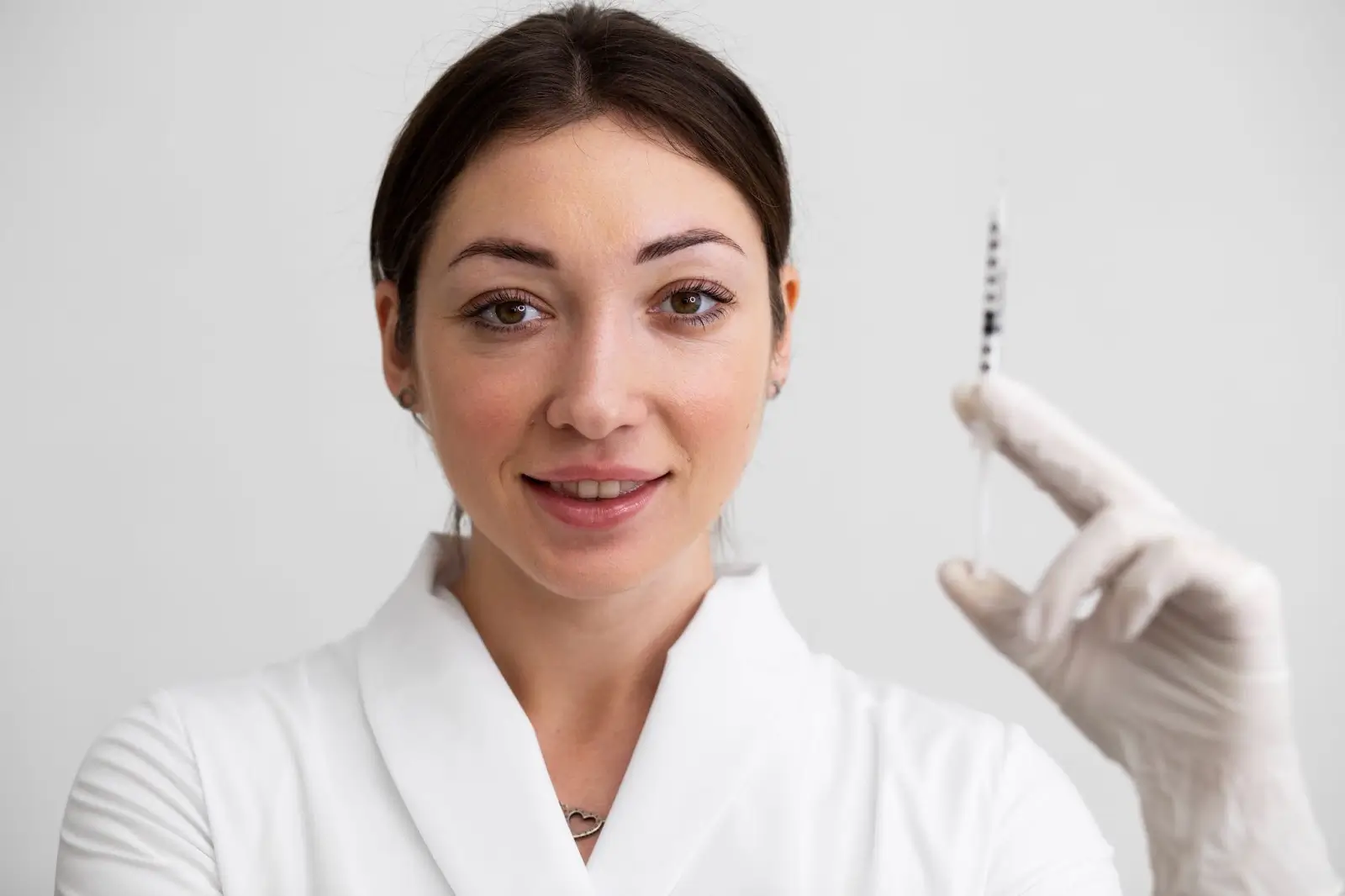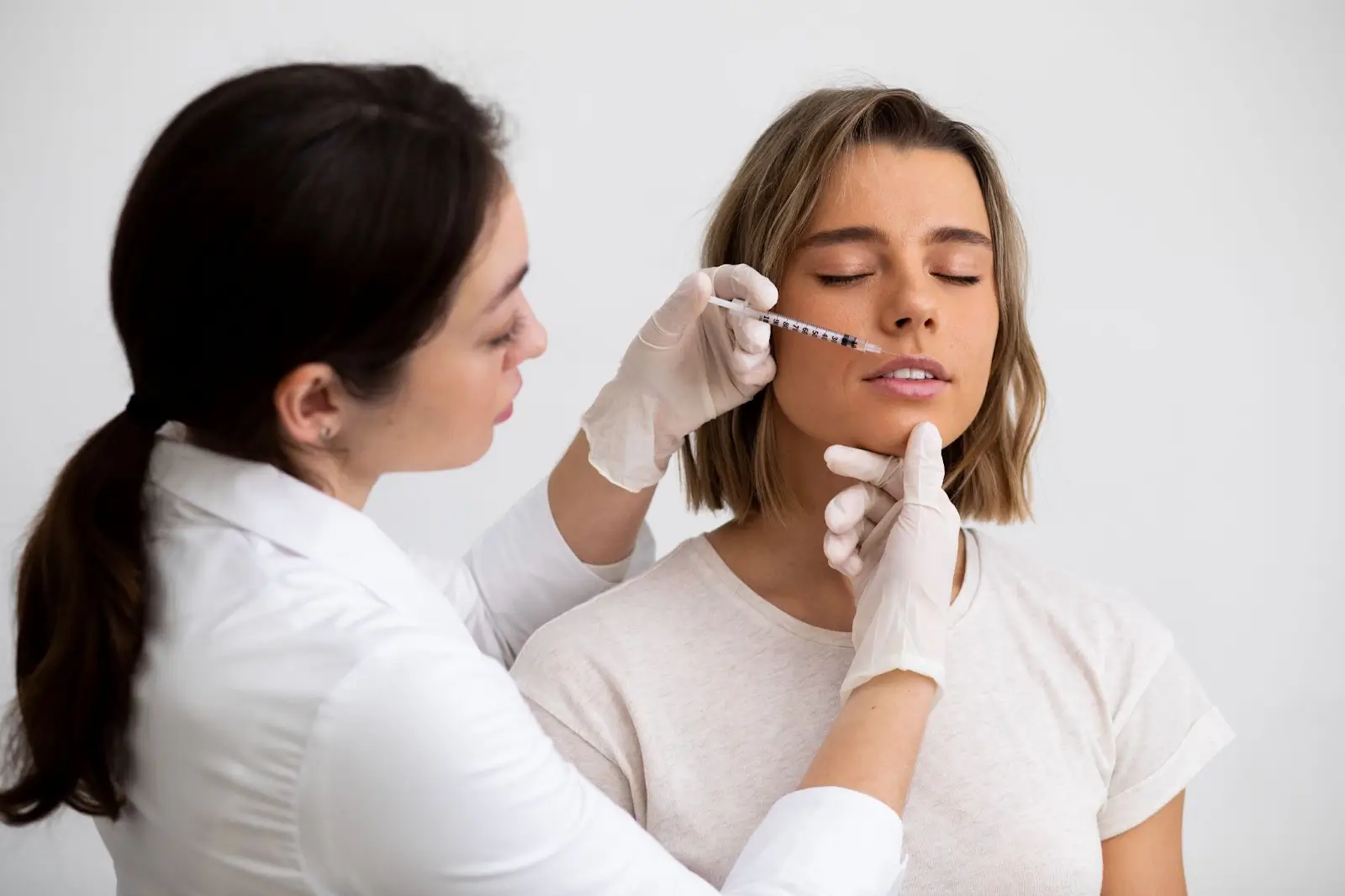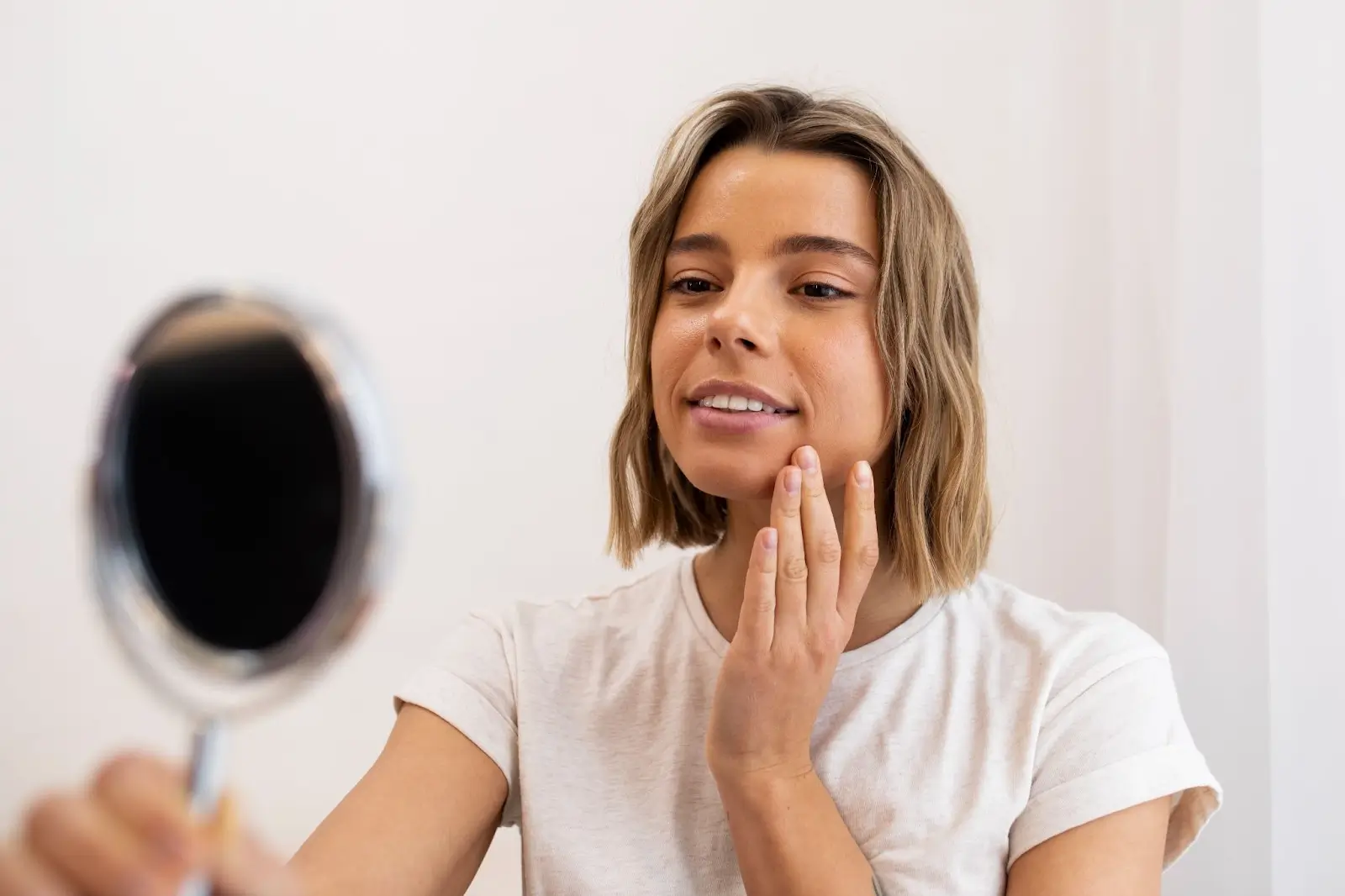
Cross-linked hyaluronic acid (HA) fillers typically last between 6 and 18 months, depending on factors such as formulation, injection depth, and individual metabolism. Some studies have even observed HA filler persistence beyond two years on imaging, though this can vary considerably based on filler density, placement technique, and patient lifestyle.
Intraline, a brand known for its hyaluronic acid–based dermal fillers, delivers smooth injectability, long-lasting volumizing effects, and predictable integration into soft tissue. While longevity depends on similar variables, preliminary clinical observations and patient feedback suggest that Intraline’s effects may persist toward the upper range of HA filler duration.
In this article, we will examine how long Intraline filler typically lasts, explore the factors that influence its longevity, and discuss realistic expectations you can share with your injector for a more personalized and informed treatment plan.
Key Takeaways
- Intraline dermal fillers offer tailored longevity across their product line, ranging from approximately 6–9 months for Intraline One, 9–12 months for Intraline Two, and up to 18 months for the M Series.
- The treatment area, injection depth, and product density significantly impact how long the filler lasts.
- Patient-specific factors such as metabolic rate, lifestyle habits, and mechanical stress (e.g., facial movement or pressure) influence the breakdown of hyaluronic acid.
- Proper aftercare, including avoiding heat, alcohol, and strenuous activity, can help preserve results and reduce post-treatment swelling or bruising.
- Maintaining hydration, using gentle skincare, and applying daily sun protection can help extend filler longevity and enhance overall skin quality.
- Practitioners typically recommend a follow-up at 6 months and touch-up treatments between 9 and 12 months to maintain optimal results and facial symmetry.
About: Doctor Medica is your trusted supplier of top-quality dermal fillers, viscosupplements, and more for your medical practice. We offer genuine products from leading brands at the lowest prices in the market. If you’re looking to order Intraline Dermal Fillers or PDO Threads online for your practice, contact Doctor Medica today.
Longevity of Intraline One, Two, and M Series Fillers

Choosing the right dermal filler requires understanding the interplay between treatment goals, anatomical area, and the expected duration of results. Intraline’s line of hyaluronic acid (HA) fillers (One, Two, and the M Series) offers tailored solutions that align with varying levels of facial aging and enhancement.
Each formulation is engineered with a distinct viscosity and cross-linking profile, allowing for optimized performance across superficial and deep facial zones. Below is an overview of the expected longevity and clinical use cases based on real-world practitioner experience:
| Intraline Variant | Expected Longevity | Suitable Treatment Areas & Benefits |
| Intraline One | 6–9 months | • Ideal for fine lines and superficial wrinkles• Subtle lip definition and hydration• Smooth texture suitable for delicate facial zones |
| Intraline Two | 9–12 months | • Mid-depth filler for nasolabial folds and marionette lines• Enhances midface volume and structure• Offers a balance of lift and softness |
| Intraline M Series | 12–18 months | • High-viscosity formula for deep volumizing• Perfect for cheeks, jawline, and chin sculpting• Provides strong contour support and long-lasting lift |
As part of a modern approach to aesthetic medicine, Intraline fillers offer patients natural-looking, long-lasting results with minimal recovery time. The combination of advanced formulation, clinical reliability, and positive Intraline reviews has earned the brand a growing reputation for safety, versatility, and consistent performance in various aesthetic practices.
Factors That Influence Intraline Filler Breakdown

Although Intraline fillers are developed to be long-lasting and biocompatible, their actual duration in the skin is not uniform across all patients. Several internal and external factors affect how long the product remains effective, which is why individual outcomes can vary.
- Injection Technique: The depth and precision of the injection play a vital role in filler longevity. Fillers placed in the deeper dermis or subcutaneous tissue tend to degrade more slowly due to lower metabolic activity. Conversely, superficial injections are more susceptible to early breakdown or uneven fading, especially in dynamic facial zones.
- Treatment Area: Areas that experience frequent motion (e.g., lips, perioral region, or nasolabial folds, etc.) break down fillers faster. In contrast, structural areas like the cheeks and jawline, which undergo less repetitive movement, tend to retain volume for a longer duration.
- Metabolic Rate: Patients with faster metabolisms, such as younger individuals or athletes, may observe quicker filler breakdown. This is due to a heightened rate of cell turnover and tissue remodeling, which accelerates the absorption of HA-based fillers.
- Lifestyle Factors: Habits such as smoking, frequent alcohol use, and high UV exposure can impair skin quality and hasten filler degradation. Overexposure to heat sources (e.g., saunas or steam rooms) and poor hydration may further compromise the filler’s structural integrity.
- Mechanical Stress: Repetitive facial motion, bruxism (teeth grinding), sleeping face-down, or overhandling the treated area during skincare routines can cause displacement and early breakdown of the filler material.
Understanding these factors allows practitioners to educate patients effectively, helping manage expectations and promote consistent, high-quality outcomes across various treatment sessions.
How to Extend the Life of Intraline Fillers Through Aftercare
Proper aftercare is essential for maximizing the longevity and quality of results following Intraline dermal filler treatment. A few simple habits can help support product integration, minimize side effects, and delay filler degradation.
Avoid the following for at least 2 weeks after treatment:
- High heat exposure, including going to saunas, steam rooms, or hot tubs. It’s also best to avoid prolonged sunbathing or participating in hot yoga
- Strenuous physical activity, which increases circulation and may promote swelling
- Alcohol consumption, as it can thin the blood and worsen bruising or inflammation
To help extend your filler’s life:
- Stay well-hydrated: Since hyaluronic acid (HA) binds water, drinking plenty of fluids enhances volume retention and keeps the skin supple.
- Eat antioxidant-rich foods: A diet high in vitamins C and E, berries, leafy greens, and healthy fats supports cellular repair and fights oxidative stress that can speed up HA breakdown.
- Protect your skin daily: Use broad-spectrum SPF on treated areas. Avoid harsh exfoliants, retinoids, and chemical peels near injection zones. Sticking to gentle, non-irritating skincare can also help.
Bonus tip: Schedule maintenance treatments before the filler completely fades. Proactive touch-ups help preserve a seamless look and minimize the amount of product needed for future sessions.
When to Reinject: Maintenance Schedules and Patient Counseling
Regular follow-ups are key to keeping filler results looking natural and well-balanced over time. Intraline fillers generally hold up well. However, maintenance timing should be adjusted based on the treatment area and patient-specific factors.
Recommended Reinjection Timelines
- Initial Follow-up: Recommended approximately 6 months after treatment. This visit allows practitioners to evaluate how the volume and contour are holding up and address any early signs of filler breakdown.
- Touch-up Treatments: Typically advised between 9 and 12 months, depending on the filler type and treatment area. Dynamic areas, such as the lips and mouth, may require earlier or more frequent reinjections, while structural zones, like the cheeks or jawline, often retain results for a longer duration.
Patient Counseling Tips
- Keep Patients Informed: Emphasize that every patient metabolizes filler differently, based on age, skin quality, hormonal fluctuations, activity levels, and lifestyle habits
- Encourage Long-term Care: Promote hydration and diets that are friendly to the skin. Also, tell patients to avoid habits that cause mechanical stress (e.g., sleeping face-down, excessive facial rubbing).
- Consider Combination Treatments: Pairing Intraline fillers with PDO threads can enhance collagen stimulation, reinforce facial structure, extend the duration of aesthetic results, and maintain natural contours without overfilling.
By using a customized reinjection strategy and educating patients about longevity factors, practitioners can ensure long-term satisfaction and consistent treatment outcomes.
Conclusion
While the answer to how long Intraline fillers last depends on several factors, these injectables deliver results of 6 to 18 months when properly placed and maintained. With guidance on aftercare, strategic reinjection, and lifestyle alignment, patients can enjoy smoother, more durable enhancements that align with their natural features.
As more practitioners and patients share their positive experiences, Intraline continues to solidify its place in modern aesthetics, offering reliable performance, natural results, and lasting satisfaction.
FAQs
1. How long do Intraline fillers last in lips vs. cheeks?
Expect 6–9 months for lip treatments and 9–18 months for cheek and jawline treatments, depending on the product and placement.
2. Can lifestyle habits shorten filler longevity?
Sun, smoking, heat, and mechanical stress can accelerate HA breakdown. Proper aftercare extends results.
3. Is it safe to combine fillers with PDO threads?
Yes. Combining fillers with other treatments can provide synergy, boosting lift, support, and longevity safely.
4. How do I know when I need a touch-up?
Monitor every 6–9 months for signs of softening or volume loss—pre-schedule maintenance before visible gaps emerge.
References
Master M. Hyaluronic acid filler longevity and localization: magnetic resonance Imaging evidence. Plastic & Reconstructive Surgery. 2020;147(1):50e-53e. doi:10.1097/prs.0000000000007429
Jeong KH, Gwak MJ, Moon SK, Lee SJ, Shin MK. Efficacy and durability of hyaluronic acid fillers for malar enhancement: A prospective, randomized, split-face clinical controlled trial. Journal of Cosmetic and Laser Therapy. 2017;20(3):184-188. doi:10.1080/14764172.2017.1279333
Torres S. Volumetric Eyebrow Lifting with the Aid of a New Hyaluronic Acid Dermal Filler (Intraline) and Upper Surgical Blepharoplasty; Enhancing Outcomes. Journal of Clinical & Experimental Dermatology Research. 2015;06(06). doi:10.4172/2155-9554.10000305
Related Articles
Joanna Carr
Understanding the Value of Filorga Injections: Balancing Cost and Benefits
Discover the value of Filorga injections at Doctor Medica. Learn how to balance cost and benefits for optimal results and satisfaction.
Joanna Carr
Plinest Treatment – Everything You Need to Know
Discover the benefits of Plinest treatment, its mechanism, results, and applications for skin rejuvenation. Learn how it works and what to expect.
Joanna Carr
Earn $400 Credit On Doctor Medica
Interested to learn more about Earning $400 Credit On Doctor Medica? Browse Doctor Medica's comprehensive listing of blog posts.


